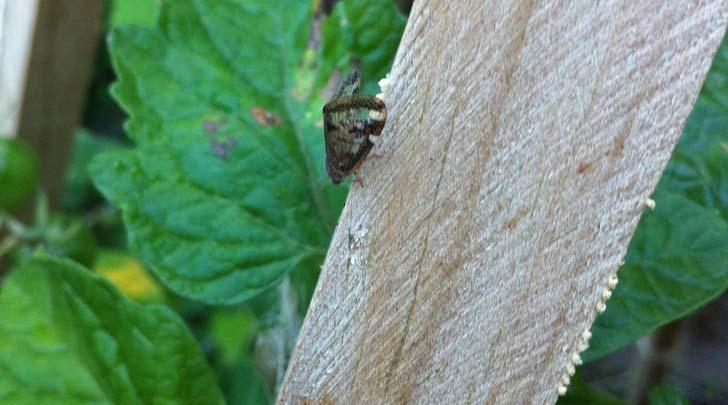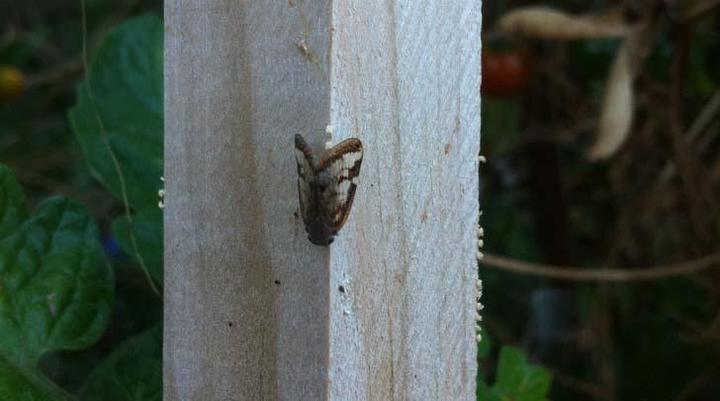Pests and pesticides
How to get rid of passion vine hoppers
Green Ideas editor Greg Roughan

Passion vine hoppers are one of the most annoying garden pests. In hot weather they quickly reach plague numbers and can devastate their preferred host plant, passion fruit vines. It can be heart-breaking to watch a healthy vine wither and drop all its fruit as the hopper horde suck away its nutrients. They will also attack most other plants, especially vines such as beans and tomatoes.
Passion vine hoppers’ sap-sucking feeding habits not only deprive plants of liquid, the tiny puncture wounds they put in stems let diseases in, which can speed an already weakened plant’s demise. Juveniles also secrete a sticky honeydew that encourages the growth of moulds that also damage plants.
Unfortunately for organic-minded gardeners, there are few beneficial insects that can control hoppers.
The adults have an effective defence mechanism – when frightened they hop away like a spring-loaded toy, making them difficult prey to catch. Meanwhile in their juvenile stage, hoppers are known by gardeners as ‘fluffy bums’ – and look quite different from the adults. They are small white nymphs that huddle together on the undersides of leaves. The name comes from the cluster of hairs on the insects’ rear ends, and these too, make the juveniles hard to prey on. Insects such as praying mantises that try to eat a fluffy bum get covered in fine white hairs that clog mouth parts and limbs, likely making the insects more trouble than they’re worth.
For these reasons gardeners trying to avoid strong pesticides have only a few options in tackling a fluffy bum infestation, or the passion vine hopper hordes they mature into.

How to kill passion vine hoppers
Step 1
The first line of attack is to use pyrethrum spray, which is an insecticide. Even the strictest organic standards allow pyrethrum as it is a natural product derived from daisies that biodegrades very quickly, is broken down by sunlight, and kills (and repels) insects without being toxic to mammals or birds.
Of course pyrethrum will kill your beneficial insects too - which is disappointing, but sometimes necessary to save a heavily infested garden. To limit damage to bees, spray after sundown when they have returned to their hives. And spray once a week or fortnight to stay on top of the hoppers’ reproduction cycle (killing any newly hatched hoppers) making sure you get underneath leaves where the juveniles like to hide.
There’s nothing so satisfying as hearing the tick tick tick of millions of hoppers leaping off their vines to die after a good spraying!
Step 2
The other important task is to destroy the hoppers’ eggs. Hoppers love laying little rows of pale eggs on dry twigs, and especially on the edges of trellis, or square stakes (see the picture above). So go around the garden with a butter knife and run it down these edges to squash the eggs. Then clip all the dry tendrils on your vines, and on any other plants such as raspberry canes that you can see have eggs on them, and burn them!
This will knock out a large proportion of the next generation, making your spraying job easier next time.
Step 3
Follow up.Don’t relax your efforts after one spray and egg-squashing session. Go out once a fortnight on passion vine hopper patrol and you’ll find that the number of hoppers and eggs that survive the winter to plague you next season will be far lower, and less likely to erupt into a plague. Plus your plants will keep thriving!
